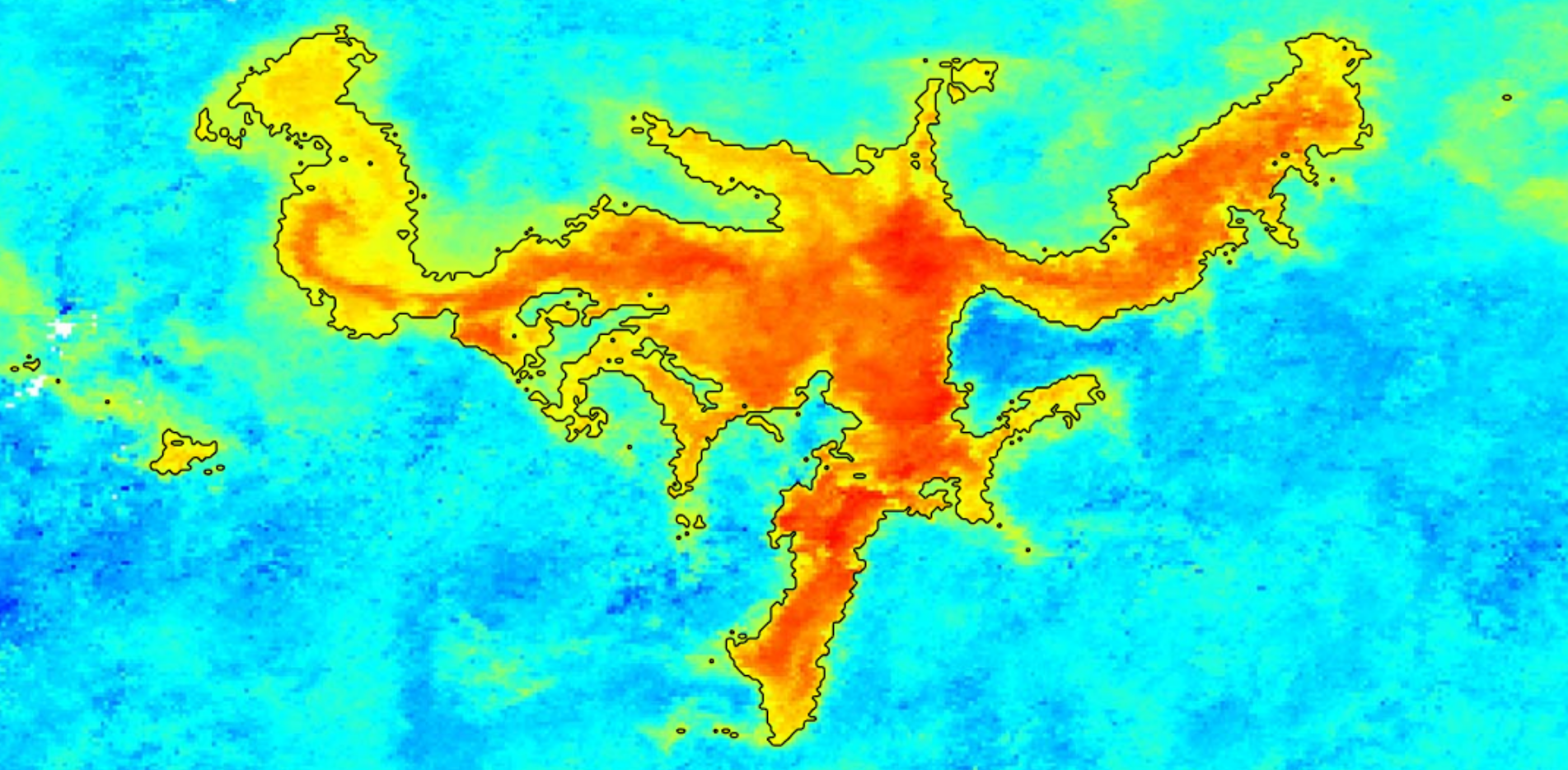 Spatio-temporal evolution of the 2007 bloom. Satellite-derived maps of chlorophyll concentrations showing snapshots from the 3 months bloom evolution.
Spatio-temporal evolution of the 2007 bloom. Satellite-derived maps of chlorophyll concentrations showing snapshots from the 3 months bloom evolution.
Dispersion/dilution enhances phytoplankton blooms in nutrient-limited waters
Abstract
Spatial characteristics of phytoplankton blooms often reflect the horizontal transport properties of the oceanic turbulent flow in which they are embedded. Classically, bloom response to horizontal stirring is regarded in terms of generation of patchiness following large-scale bloom initiation. Here, using satellite observations from the North Pacific Subtropical Gyre and a simple ecosystem model, we show that the opposite scenario of turbulence dispersing and diluting fine-scale (B1–100 km) nutrient-enriched water patches has the critical effect of regulating the dynamics of nutrients–phytoplankton–zooplankton ecosystems and enhancing accumulation of photosynthetic biomass in low-nutrient oceanic environments. A key factor in determining ecological and biogeochemical consequences of turbulent stirring is the horizontal dilution rate, which depends on the effective eddy diffusivity and surface area of the enriched patches. Implementation of the notion of horizontal dilution rate explains quantitatively plankton response to turbulence and improves our ability to represent ecological and biogeochemical processes in oligotrophic oceans.